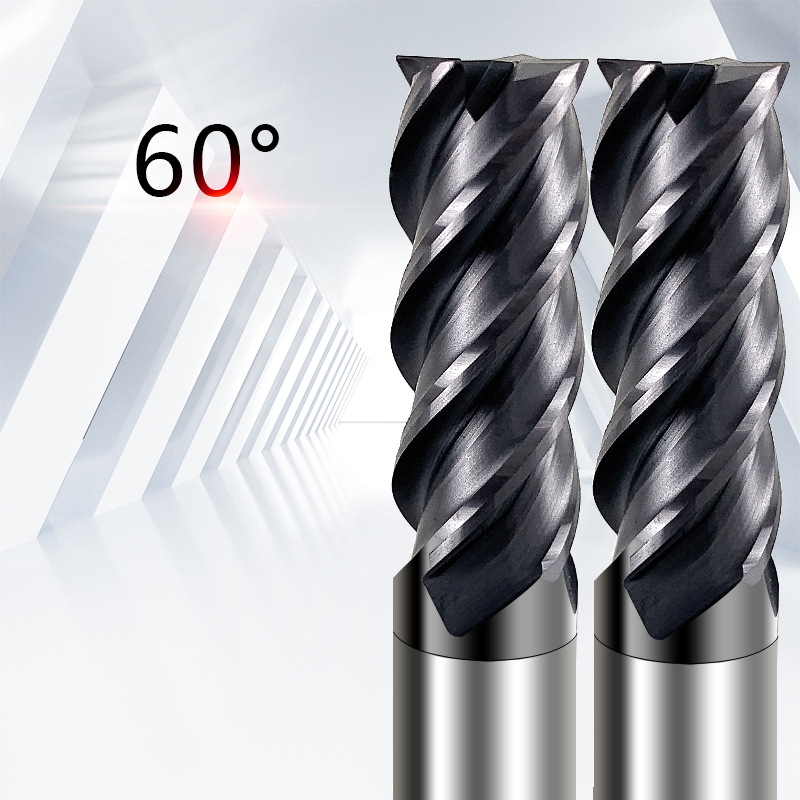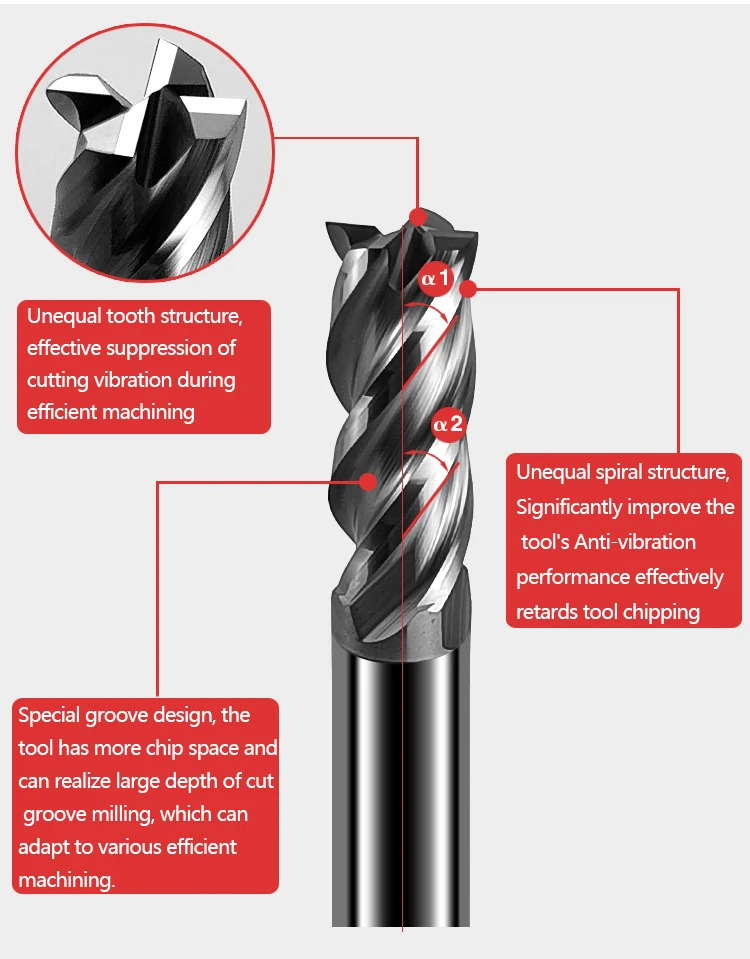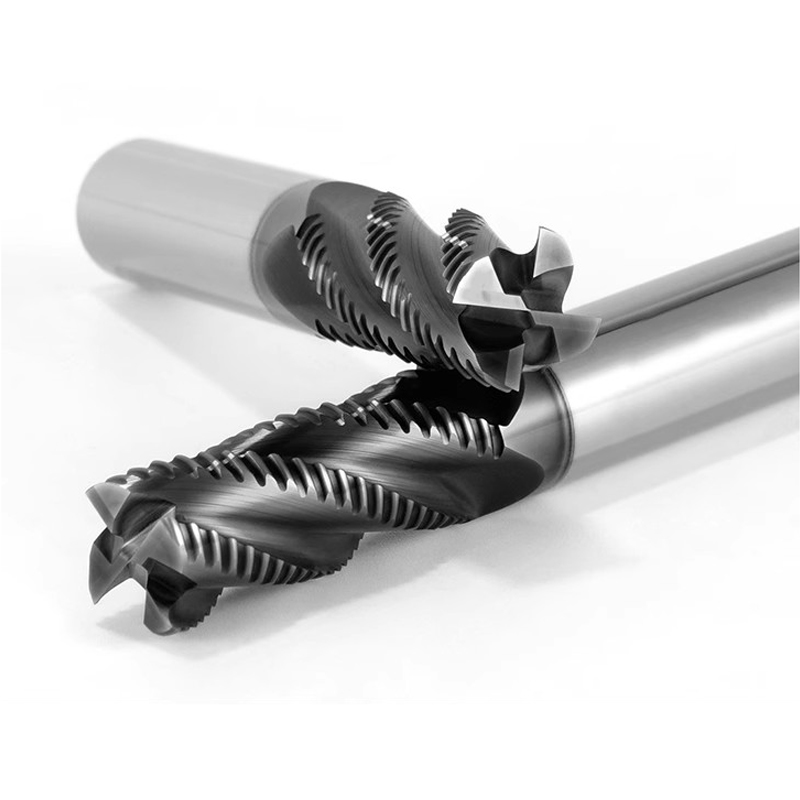
How to Choose Carbide Milling Cutters
Date:2025-08-13Number:1221Today, let’s discuss how to select the right carbide milling cutter. The market offers a wide variety of carbide milling tools, but choosing the most suitable one is a common concern for many customers. Understanding tool knowledge is essential.
First, several comprehensive factors must be considered, such as the workpiece material, working conditions, machine tool performance, process parameters, and the geometric parameters of the tool.
For short-chipping materials like cast iron, non-ferrous metals (e.g., copper, aluminum alloys), and plastics, ISO K-grade carbide cutters are recommended:
YG series (e.g., YG8), K10-K20 grades – High wear resistance and excellent impact resistance.
For high-silicon aluminum alloys, diamond-coated tools are preferred for extended tool life.
For long-chipping materials like carbon steel, tempered steel, and alloy steel, ISO P-grade carbide cutters are ideal:
YT series (e.g., YT15), P10-P30 grades – Balance wear resistance and toughness.
For hardened steel (HRC ≥ 45), fine-grain carbide (e.g., S-grade) or TiAlN-coated tools are recommended to enhance red hardness and wear resistance.
For sticky materials like stainless steel, titanium alloys, and high-temperature alloys, ISO M-grade square-end or corner-radius carbide mills are preferred:
YW series (e.g., YW2), M10-M30 grades – High heat and adhesion resistance.
AlCrN or TiSiN coatings reduce built-up edge (BUE), preventing overheating and maintaining cutting sharpness.

Number of Flutes:
Roughing: 2-4 flutes (large chip space for high feed rates).
Finishing: 4-6 flutes (better rigidity and surface finish).
Thin-wall machining: Fewer flutes (single-flute mills reduce vibration).
Helix Angle & Flute Design:
Soft materials: Large helix angle (e.g., 45°) for better chip evacuation.
Hard materials: Small helix angle (e.g., 30°) for edge strength and chip resistance.
Titanium alloys: Serrated-edge (wave-form) cutters reduce cutting forces.
Aerospace parts: Variable helix cutters with high-pressure coolant minimize vibration.

TiN (Titanium Nitride): Low-cost, general-purpose for soft materials at low speeds.
TiAlN (Titanium Aluminum Nitride): High red hardness, suitable for medium/high-speed steel machining.
AlCrN / TiSiN: High hardness with good lubricity; TiSiN excels in dry cutting (hardened steel & high-temp alloys).
DLC (Diamond-Like Carbon): Low friction, ideal for non-ferrous materials and dry cutting.
| Material Type | Cutting Speed (Vc, m/min) | Feed per Tooth (fz, mm) | Cutting Depth (ap) |
|---|---|---|---|
| Aluminum Alloy | 300–800 | 0.05–0.2 | 0.5–3×D |
| Carbon Steel (45#) | 80–150 | 0.05–0.15 | 0.3–1×D |
| Stainless Steel (304) | 50–100 | 0.03–0.1 | 0.2–0.5×D |
Cooling Methods:
Internal coolant: Improves chip evacuation.
External coolant: Reduces heat and adhesion.
Dry cutting: Requires compatible coatings (see above).
Roughing milling cutter
Widely known as corn milling cutter and roughing end milling cutter, it is a kind of high-efficiency classic roughing cutter with chip-sharing flutes designed on the cutter body to form a raised, serrated cutting teeth. The purpose of this design is to break long continuous chips into small, easy to remove chips, but also to avoid long chips to wrap around the tool, so as to realize the tool in the heavy cutting, large feed under the harsh working conditions of stable operation.
The only shortcoming is that the size tolerance is large, the margin is large, and its machined surface is too rough, requiring semi-finishing before finishing.
![]()

Ripple milling cutter
is a kind of milling cutter with wavy cutting edge, which effectively reduces cutting vibration, lowers cutting resistance, high feed and thus realizes extremely high material cutting efficiency, and its unique design has a very significant advantage in the field of roughing machining and taking into account semi-finishing machining, which cannot be compared with roughing milling cutters. More cost effective than other milling cutters.
In the field of mold manufacturing, aerospace, energy equipment, especially good at processing difficult to machine materials: stainless steel, mold steel, titanium alloy, high temperature alloy, aluminum alloy of efficient roughing.
Tool Life Tips:
If chipping or thermal cracks occur, check parameters and cooling.
Start at 70% of recommended parameters, then optimize gradually.
Ensure tool runout < 0.02 mm for longer tool life.
We hope this guide helps industrial professionals better understand tool selection.
Follow Jimmy Tools' website for more cutting tool insights!

person: Mr. Gong
Tel: +86 0769-82380083
Mobile phone:+86 15362883951
Email: info@jimmytool.com
Website: www.jimmytool.com